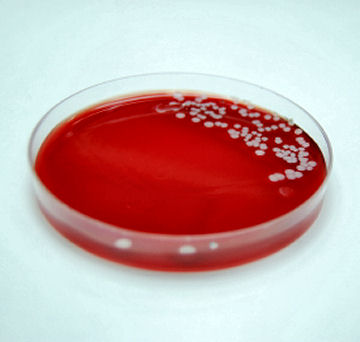Gut microbes and weight
A new report links a baby's gut microbes with the chance that the baby will become an overweight child.
Health experts have long worried about the increasing rate of obesity in kids. It’s an important concern: Being very overweight or obese during childhood can lead to serious problems normally seen in adults, such as diabetes and high blood pressure. Poor diets and a lack of exercise are usually the culprits. But would you ever have imagined there might be a connection between the bacteria that lived in your gut when you were a baby and the chance that you would become overweight?
Scientists in Finland recently found just such a link. In a recent study, they showed that as infants overweight children had different species of bacteria living in their guts, or intestines, than did normal-weight kids.
You probably think of bacteria only as germ that can make you sick. While it’s true that some bacteria can make people ill, your body actually depends on some types of bacteria to help you digest food and extract nutrients from it. These “good” bacteria live in your intestines, where they process the food you eat.

Human babies get these bacterial helpers from their moms. When a baby is born, some of tghe bacteria in the mother transfer into the baby’s body. Growing babies get additional “good” bacteria from the milk their mothers produce. And it turns out this bacteria might play an important role in regulating weight just six years later.
The research team examined the intestinal bacteria that lived in a group of 7-year-olds when they were babies. The children were already part of another long-term study, so the scientists had collected their data years ago, when the children were 6 months old and again when they were a year old.
The researchers found that kids who were normal weight at age 7 had high levels of a species called Bifidobacterium (pronounced bih-FY-doh-bac-TEER-ee-um) in their intestines as babies. They also had low levels of other bacteria called Staphylococcus aureus, or staph for short.
The researchers found exactly the opposite pattern in overweight 7-year-olds. As babies, the heavy kids had fewer Bifidobacterium and higher amounts of staph.
So how could these bacteria affect weight? The researchers still haven’t tested that question. But they point out that staph—the bacteria found in high amounts in babies who grew up to become overweight—has been linked to a condition called inflammation. Other studies have shown a connection between inflammation and obesity. Could the staph in some babies’ intestines lead to inflammation, and therefore to obesity? Scientists can’t say yet, but future tests might lead to an answer.
The results also suggest that some bacteria might protect people from becoming overweight in the first place. In this study, high levels of Bifidobacterium bacteria were associated with a lower chance of becoming overweight. Bifidobacterium is also found in the milk mothers produce—and earlier studies have shown a link between breastfeeding and a lower chance of becoming obese. Taken together, these data suggest this type of bacteria plays an important role in preventing obesity. This information could lead to new ways to control weight gain, the researchers say.—Jennifer Cutraro
Power Words
From The American Heritage® Student Science Dictionary, The American Heritage® Children’s Science Dictionary, and other sources.
bacteria Living things that are made up of single cells, each without a cell nucleus. Bacteria are found in all of the Earth’s environments and usually live off other organisms. Some kinds of bacteria cause disease.
inflammation The reaction of a part of the body to injury or infection, characterized by swelling, heat and pain. Inflammation increases the amount of blood flow to the injured area, bringing in more white blood cells and often healing the damaged tissue.
intestine The part of the digestive system that is shaped like a hollow tube and goes from the stomach to the anus. In the intestine, digestion of food is completed, and nutrients and water are absorbed into the body.
obese Having excess body fat.
overweight Exceeding the bodily weight normal for one’s age, height and build.
probability A number expressing the likelihood of the occurrence of a given event, especially a fraction expressing how many times the event will happen in a given number of tests or experiments. For example, when rolling a six-sided die, the probability of rolling a particular side is one in six.
Copyright © 2002, 2003 Houghton-Mifflin Company. All rights reserved. Used with permission.
Going Deeper:
Ehrenberg, Rachel. 2008. Microbes weigh in on obesity. Science News 173(April 5):221. Available at http://www.sciencenews.org/articles/20080405/note12.asp .
Goho, Alexandra. 2007. Our microbes, ourselves. Science News 171(May 19):314–316. Available at http://www.sciencenews.org/articles/20070519/bob9.asp .
Raloff, Janet. 2008. Nurturing our microbes. Science News 173(March 1):138–140. Available at http://www.sciencenews.org/articles/20080301/bob10.asp .
Sohn, Emily. 2008. Recipe for health. Science News for Kids (April 2). Available at http://www.sciencenewsforkids.org/articles/20080402/Feature1.asp .
______. 2004. Packing fat. Science News for Kids (Oct. 27). Available at http://www.sciencenewsforkids.org/articles/20041027/Feature1.asp .







